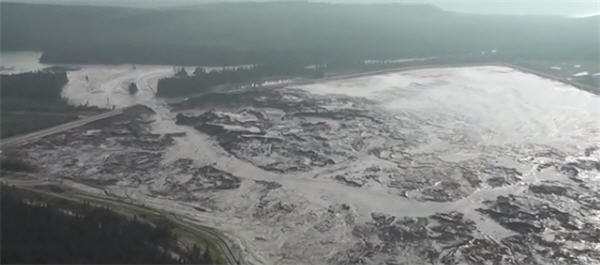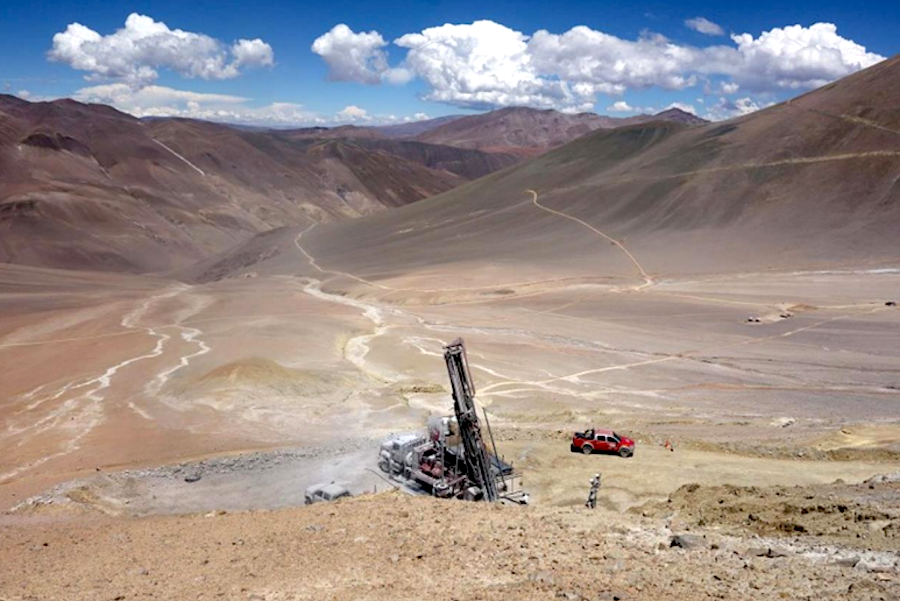Some facts about the Mount Polley Mine

Image from Cariboo Regional District
I have been aware of and following the Mount Polley mine for close to 20 years. Because of a lot uninformed discussion about the mine I thought I would try to outline some basic facts
The Tailings Pond Spill
- Water is used in the process to concentrate the ore from the mine, the tailings pond is where the waste water goes to allow waste materials to settle out.
- The tailings pond will include not only the waste material suspended in the water but any additional material used in the mine mill to extract the ore. It is not a dump for whatever, it does not contain such things as used oil. The sediment is like a very fine wet clay, when saturated it can run like a slurry, which is what seems to have happened on Monday
- Mount Polley has a good record in reuse of the water for the mine with much of it coming from the tailings pond. For them to reuse the water it has to be relatively clean.
- The water is a milky green in the tailings pond because of the suspended fine particles, it is the same reason many fast flowing glacial mountain creeks have the same colour
- The sediment from the tailings pond is likely to contain various heavy metals but at this time I do not know of any factual information about the actual contents of the sediment.
- The sediment with the probable heavy metals will have settled out early in the flood, most of it will have ended up in Polley Lake or the upper parts of Hazeltine Creek, some if it may have managed to go all the way down to Quesnel Lake but no further than just into the edge of the lake. Beyond that point the only issue is the quality of the water
- About 10 kilometer of Hazeltine Creek have been completely destroyed through the flood of the water, by destroyed I mean going from a one to two meter wide creek bed to one close to 50 meters wide. Hazeltine Creek was used by coho to spawn
- The surface area of the tailings pond was about 170 hectares . Looking at the pictures of the breach, the depth of the water and sediment was something around 25 to 30 meters which would mean a total capacity of 50,000,000 cubic meters – reports are that a combined 14,500,000 cubic meters of water and sediment were lost.
The Mount Polley Mine
- The Mount Polley mine is located just west of Quesnel Lake
- The mine is an open pit copper-gold mine
- The deposit was first discovered in the late 1960s
- Imperial Metals received a mine development certificate in 1992 – this is approval process in place before the start of the BC environmental assessment
- Each year the mine produces about 40,000,000 pounds of copper and 50,000 ounces of gold
- The mine employs about 300 people
- The mine opened in 1997 and operated for four years before closing because of low copper prices.
- It re-opened in September 2005 in part because another ore body was discovered and in part because the price of copper rose significantly
- The mine is currently expected to operate for another 11 years.
- The tax revenues from the latest expansion of the mine are shared between the province and two First Nations. The William’s Lake band get s 18.5%, Xatsull gets 16.5% and BC 65%
Imperial Metals
- Mount Polley is owned by Imperial Metals who are a small scale BC mining company – this is not some large multinational company
- The largest share holder is N. Murray Edwards, the co-owner of the Calgary Flames, with a 36.1% stake in the company. Another 16.9% is owned by the US based Fairholme Capital Management of Maimi Florida. These two holdings have a majority control of the company.
- Imperial Metals had a value of around $1,000,000,000 up until recently
- The stock price has dropped 40% yesterday with about 100 times the number of shares being sold than normally
- The net income of the company has been around $40,000,000 per year
- As opposed to most mineral exploration juniors in BC, Imperial Metals decided to develop their properties instead of selling them to one of the big multi-nationals.
- They own a 100% stake in the Mount Polley mine and in the Sterling mine, a very small gold mine in Nevada.
- In north western BC they own a 50% stake in the Huckleberry mine which is a copper mine of the same scale as Mount Polley though without the significant gold portion pf the operations .
- They own 100% of the Red Chris mine 800 kilometers south of Dease Lake. The mine is scheduled to open later this year
- They own a 50% stake in the Ruddock Creek property which is 50 km north of Shuswap Lake
- They own 100% of the Catface property in Clayoqout Sound though very little is being done with this property, realistically the possible development of a mine is at best a decade away. They got this property in 2009 in a merger with Selkirk Metals
- Imperial Metals have a number of other claims in BC but none of them are at all close to mine development
{{ commodity.name }}
{{ post.title }}
{{ post.date }}

4 Comments
Matt
Thanks for the info Bernard. Imperial needs to act fast and focused hiring as many locals as possible to clean the obvious mess up. Then they need to monitor and report frequently on any issues surrounding ‘mess’ that are not easily seen, such as the Sockeye run. Tailings dams should never be able to burst in that manner, but now that it happened you have to find out why and prevent it in the future. Of course a situation like this brings out every anti-mining type in the planet, but still every single part of of the transportation that they arrived at the “protest” was mined. I have my fingers crossed that the water contaminants are not sufficient to harm the quality of water in Quesnel lake.
Dawn Keyote
Lost in all this is the comparison to the Washington disaster caused by excessive rain.
The Dept. of Mines is supposed to monitor and advise action not react after the fact. This is Rainbow management …. only show up after the storm
DK
RufusXavier
The things I would like to know are;
1-was cyanide used in the process? There have been many mixed comments but none of the water testing even covers cyanide as a contaminant.
2-How much Iron is in the tailings? The NPRI data released shows a mishmash of toxic metals but the alkaline status and a high presence of Iron would render them relatively stable as complexes. A TCLP results and/or a geological characterization of the silt would be pretty important in the grand scheme of things. (I have also noted that the BC MoE has historic data on the water from the tailings pond. They did monitor Cd and Se but not As so I am assuming the As is bound as FerroArsenate which should bode relatively well for the Cd and Se also)
Duncan Crow
Bernard, who reported that a combined 14,500,000 cubic meters of water and sediment were lost, and how did they say they got the figure?